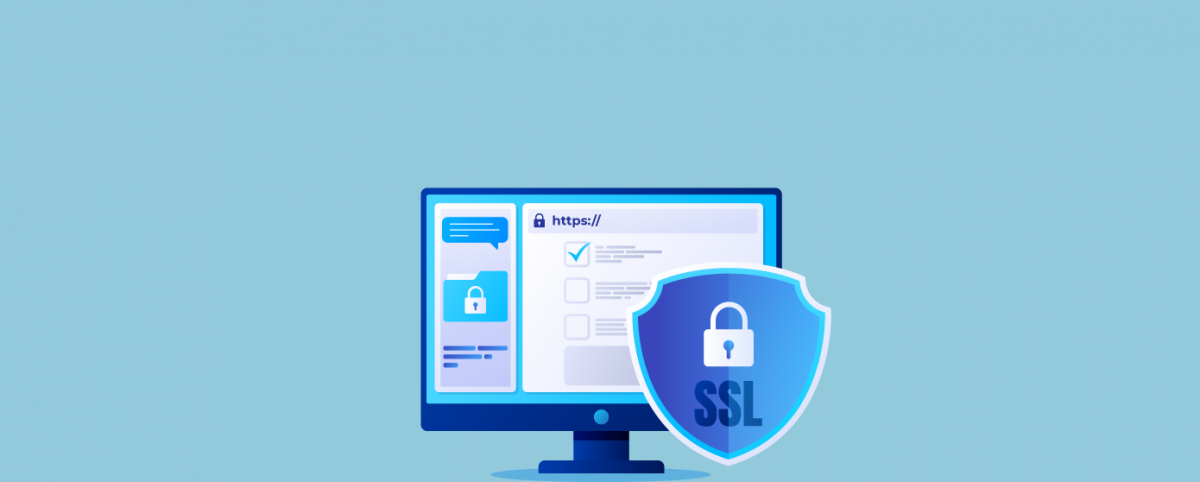SSL-Protected Websites Have More Secure Web Servers: Here’s How?
SSL certificates protect internet communications and assure data integrity, privacy, and security in transit. They enable businesses to create safer, more secure user experiences. They prevent a range of cyberattacks such as Man-in-the-middle attacks, phishing, data spoofing, eavesdropping, and so on. As a result, SSL-protected websites invoke greater trust and confidence among users and customers. SSL-protected websites attract more substantial search engine rankings. Irrespective of whether you own/ run a dynamic e-commerce website or a large corporate website, or a simple blog, you must get an SSL certificate for your website.
This article delves into how SSL certificates work and how they make web servers more secure.
How Does an SSL Certificate Work?
SSL Certificates initiate secure communication between the server and client/ browser via the TLS/ SSL protocol. SSL uses encryption algorithms to scramble the data in transit, making it impossible to read when transmitted over the connection.
The private key is stored securely on the server while the public key is made available with the SSL and shared during the TLS handshake. Anyone who wishes to decrypt encrypted data with a public key can do so only with a private key.
SSL-Protected Websites Have More Secure Web Servers: Here’s How
Authenticates Server Identity
SSL Certificates are like digital passports for websites – they identify and authenticate the server as belonging to the entity that the user thinks they are communicating with. A thorough validation process is conducted when an organization places a request to the Certificate Authority (CA). Upon adding SSL to the website, the visible cues of protection appear.
Of course, the validation process and visible cues of protection vary across different SSL Certificates.
- Only the domain ownership is verified for Domain Validation (DV) Certs. This certificate offers the lowest levels of assurance. Since these are easy to obtain, attackers tend to prefer DV Certs.
- The domain and business ownership are validated for Organization Validation (OV) Certs. Offering a higher level of assurance compared to the DV SSL certs. When the user clicks on the padlock (one of the visible cues), they can view the organization’s name in the Details tab of the certificate information.
- For Extended Validation (EV) Certs, the CA conducts a rigorous validation process to ensure the organization exists. It offers the highest level of assurance. When the user clicks on the padlock of an EV SSL cert, they can view the organization’s name it was issued to right there without going to the details tab of the certificate.
Dedicated SSL Certificates
Using dedicated SSL Certificates, organizations can ensure higher server security levels. How so? Dedicated SSL Certificates are purchased for specific domain names. They can be installed only into the server where the domain exists, unlike shared certificates where several users sharing the same server (such as cloud service or host) use the certificate. If one of the websites sharing the certificate is affected, all the others are also at risk.
Secures the Communication Channel Between Server-Client
An SSL-protected website ensures that all client and web server communication is secure. They help ensure that attackers are not able to eavesdrop on communication, intercept, or tamper with them in the following ways:
TLS Handshake: Any secure communication always begins with a TLS Handshake. TLS Handshake is an asymmetric encryption process where two different keys are used on two different ends of the connection, made possible by public-key cryptography.
- The server secured with SSL is requested to establish its identity by the browser/ client attempting to connect with a client hello message.
- The server responds by sending a copy of its SSL certificate and the server hello message.
- The client verifies the certificate to ensure where the SSL-protected website can be trusted.
- Upon successful verification, the client sent the premaster secret – a random string of bytes encrypted using the already shared public key and decrypted only using the server’s private key.
- The web server decrypts the premaster secret using its private key
Session Key Generation: Once TLS Handshake is completed, session keys are generated by the server and client to encrypt and decrypt data after that. Since these are temporary keys, they are terminated after the session, and new session keys are generated for each new session. This is a symmetric encryption as the same set of keys are used on both ends. Further use of public and private keys is not necessary.
Message Authentication Code (MAC): To ensure that the data has not been tampered with/ intercepted in transit, all TLS communications from the server contain a MAC, a digital signature assuring that the communication is from the actual server/ website.
Conclusion
Is an SSL-protected website and its server completely free of cyberattacks? No. Is a server secured with an SSL more protected? Yes. SSL Certificates are no magic wands; they need to be part of a robust and resilient security solution like Entrust from Indusface for heightened protection.
Found this article interesting? Follow Indusface on Facebook, Twitter, and LinkedIn to read more exclusive content we post.

 February 1, 2022
February 1, 2022






